Hao Ma
State Key Laboratory of Information Engineering in Survering, Mapping and Remote Sensing, Wuhan University
COPO: Consistency-Aware Policy Optimization
Aug 06, 2025Abstract:Reinforcement learning has significantly enhanced the reasoning capabilities of Large Language Models (LLMs) in complex problem-solving tasks. Recently, the introduction of DeepSeek R1 has inspired a surge of interest in leveraging rule-based rewards as a low-cost alternative for computing advantage functions and guiding policy optimization. However, a common challenge observed across many replication and extension efforts is that when multiple sampled responses under a single prompt converge to identical outcomes, whether correct or incorrect, the group-based advantage degenerates to zero. This leads to vanishing gradients and renders the corresponding samples ineffective for learning, ultimately limiting training efficiency and downstream performance. To address this issue, we propose a consistency-aware policy optimization framework that introduces a structured global reward based on outcome consistency, the global loss based on it ensures that, even when model outputs show high intra-group consistency, the training process still receives meaningful learning signals, which encourages the generation of correct and self-consistent reasoning paths from a global perspective. Furthermore, we incorporate an entropy-based soft blending mechanism that adaptively balances local advantage estimation with global optimization, enabling dynamic transitions between exploration and convergence throughout training. Our method introduces several key innovations in both reward design and optimization strategy. We validate its effectiveness through substantial performance gains on multiple mathematical reasoning benchmarks, highlighting the proposed framework's robustness and general applicability. Code of this work has been released at https://github.com/hijih/copo-code.git.
GGBall: Graph Generative Model on Poincaré Ball
Jun 08, 2025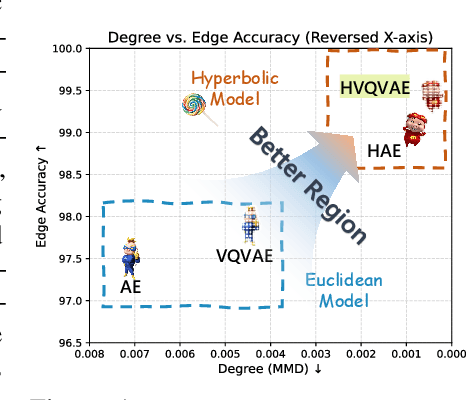

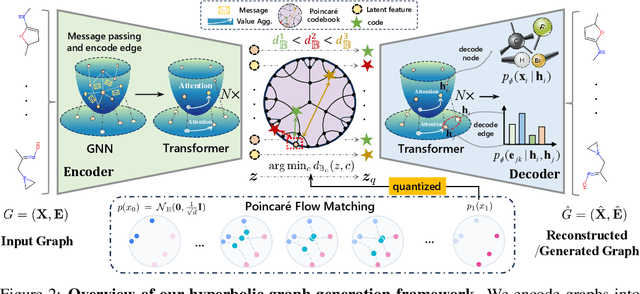
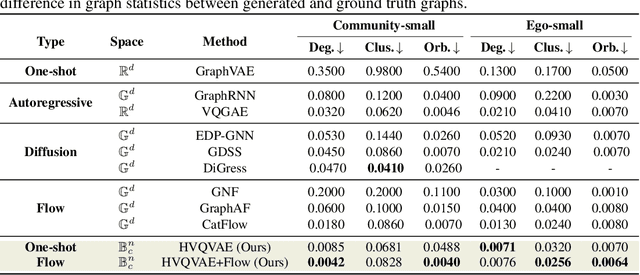
Abstract:Generating graphs with hierarchical structures remains a fundamental challenge due to the limitations of Euclidean geometry in capturing exponential complexity. Here we introduce \textbf{GGBall}, a novel hyperbolic framework for graph generation that integrates geometric inductive biases with modern generative paradigms. GGBall combines a Hyperbolic Vector-Quantized Autoencoder (HVQVAE) with a Riemannian flow matching prior defined via closed-form geodesics. This design enables flow-based priors to model complex latent distributions, while vector quantization helps preserve the curvature-aware structure of the hyperbolic space. We further develop a suite of hyperbolic GNN and Transformer layers that operate entirely within the manifold, ensuring stability and scalability. Empirically, our model reduces degree MMD by over 75\% on Community-Small and over 40\% on Ego-Small compared to state-of-the-art baselines, demonstrating an improved ability to preserve topological hierarchies. These results highlight the potential of hyperbolic geometry as a powerful foundation for the generative modeling of complex, structured, and hierarchical data domains. Our code is available at \href{https://github.com/AI4Science-WestlakeU/GGBall}{here}.
Constraint-Aware Diffusion Guidance for Robotics: Real-Time Obstacle Avoidance for Autonomous Racing
May 19, 2025Abstract:Diffusion models hold great potential in robotics due to their ability to capture complex, high-dimensional data distributions. However, their lack of constraint-awareness limits their deployment in safety-critical applications. We propose Constraint-Aware Diffusion Guidance (CoDiG), a data-efficient and general-purpose framework that integrates barrier functions into the denoising process, guiding diffusion sampling toward constraint-satisfying outputs. CoDiG enables constraint satisfaction even with limited training data and generalizes across tasks. We evaluate our framework in the challenging setting of miniature autonomous racing, where real-time obstacle avoidance is essential. Real-world experiments show that CoDiG generates safe outputs efficiently under dynamic conditions, highlighting its potential for broader robotic applications. A demonstration video is available at https://youtu.be/KNYsTdtdxOU.
Learning Auxiliary Tasks Improves Reference-Free Hallucination Detection in Open-Domain Long-Form Generation
May 18, 2025Abstract:Hallucination, the generation of factually incorrect information, remains a significant challenge for large language models (LLMs), especially in open-domain long-form generation. Existing approaches for detecting hallucination in long-form tasks either focus on limited domains or rely heavily on external fact-checking tools, which may not always be available. In this work, we systematically investigate reference-free hallucination detection in open-domain long-form responses. Our findings reveal that internal states (e.g., model's output probability and entropy) alone are insufficient for reliably (i.e., better than random guessing) distinguishing between factual and hallucinated content. To enhance detection, we explore various existing approaches, including prompting-based methods, probing, and fine-tuning, with fine-tuning proving the most effective. To further improve the accuracy, we introduce a new paradigm, named RATE-FT, that augments fine-tuning with an auxiliary task for the model to jointly learn with the main task of hallucination detection. With extensive experiments and analysis using a variety of model families & datasets, we demonstrate the effectiveness and generalizability of our method, e.g., +3% over general fine-tuning methods on LongFact.
ALOHA: Empowering Multilingual Agent for University Orientation with Hierarchical Retrieval
May 13, 2025Abstract:The rise of Large Language Models~(LLMs) revolutionizes information retrieval, allowing users to obtain required answers through complex instructions within conversations. However, publicly available services remain inadequate in addressing the needs of faculty and students to search campus-specific information. It is primarily due to the LLM's lack of domain-specific knowledge and the limitation of search engines in supporting multilingual and timely scenarios. To tackle these challenges, we introduce ALOHA, a multilingual agent enhanced by hierarchical retrieval for university orientation. We also integrate external APIs into the front-end interface to provide interactive service. The human evaluation and case study show our proposed system has strong capabilities to yield correct, timely, and user-friendly responses to the queries in multiple languages, surpassing commercial chatbots and search engines. The system has been deployed and has provided service for more than 12,000 people.
Stochastic Trajectory Prediction under Unstructured Constraints
Mar 18, 2025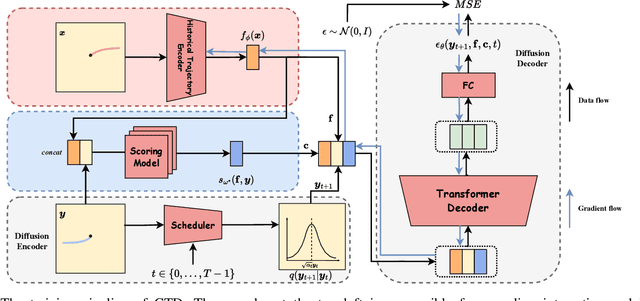
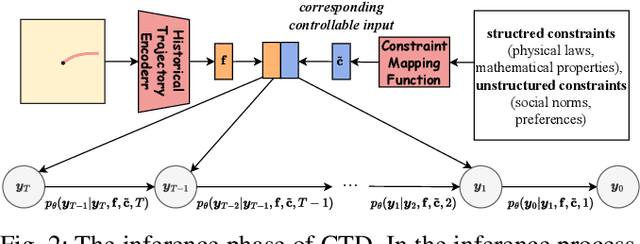
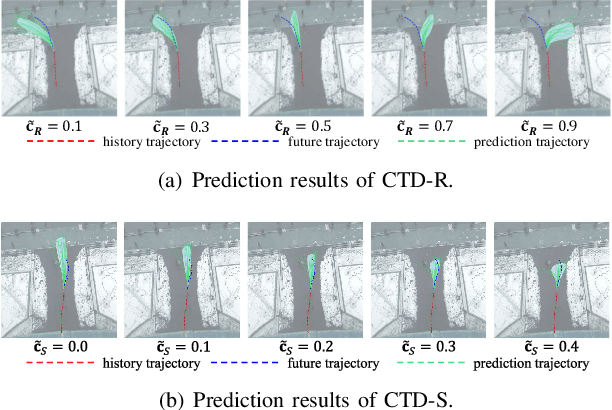
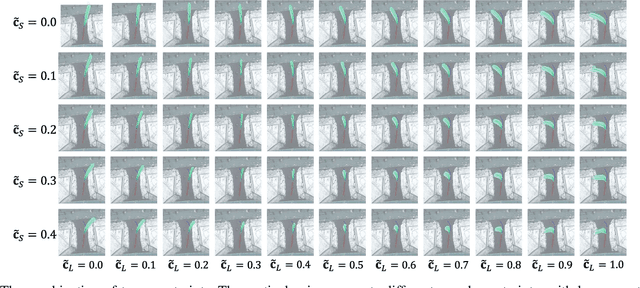
Abstract:Trajectory prediction facilitates effective planning and decision-making, while constrained trajectory prediction integrates regulation into prediction. Recent advances in constrained trajectory prediction focus on structured constraints by constructing optimization objectives. However, handling unstructured constraints is challenging due to the lack of differentiable formal definitions. To address this, we propose a novel method for constrained trajectory prediction using a conditional generative paradigm, named Controllable Trajectory Diffusion (CTD). The key idea is that any trajectory corresponds to a degree of conformity to a constraint. By quantifying this degree and treating it as a condition, a model can implicitly learn to predict trajectories under unstructured constraints. CTD employs a pre-trained scoring model to predict the degree of conformity (i.e., a score), and uses this score as a condition for a conditional diffusion model to generate trajectories. Experimental results demonstrate that CTD achieves high accuracy on the ETH/UCY and SDD benchmarks. Qualitative analysis confirms that CTD ensures adherence to unstructured constraints and can predict trajectories that satisfy combinatorial constraints.
Causal Mean Field Multi-Agent Reinforcement Learning
Feb 20, 2025
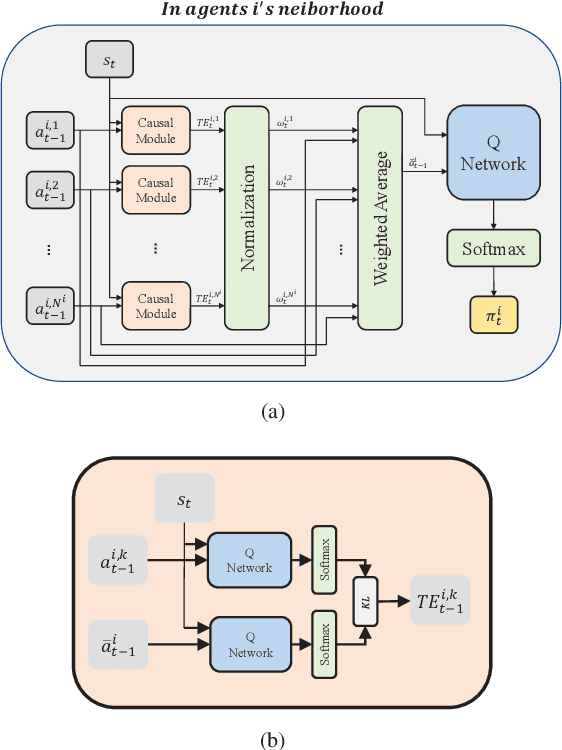
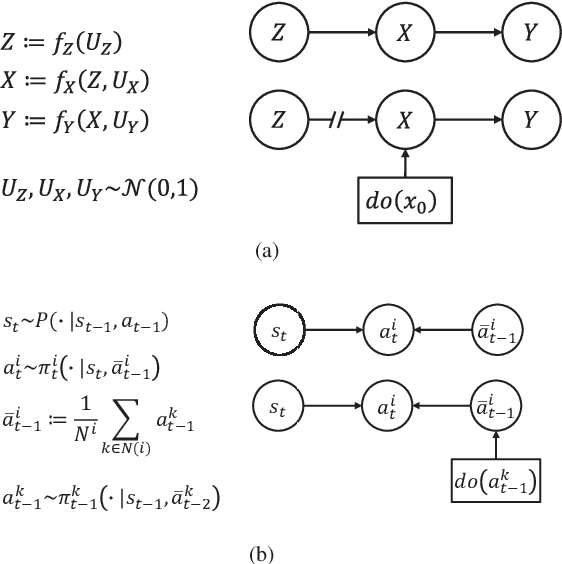
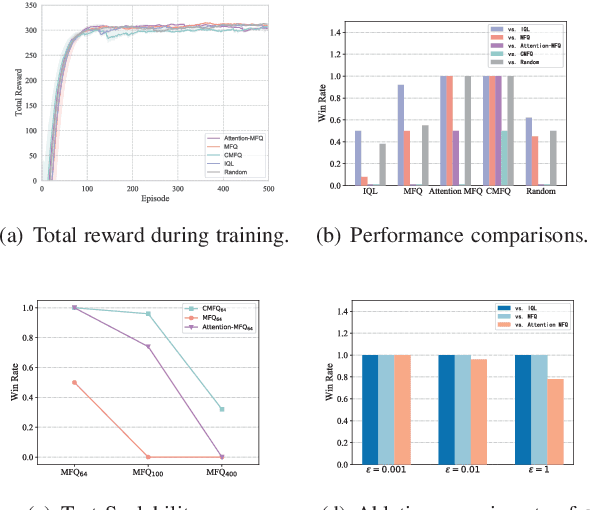
Abstract:Scalability remains a challenge in multi-agent reinforcement learning and is currently under active research. A framework named mean-field reinforcement learning (MFRL) could alleviate the scalability problem by employing the Mean Field Theory to turn a many-agent problem into a two-agent problem. However, this framework lacks the ability to identify essential interactions under nonstationary environments. Causality contains relatively invariant mechanisms behind interactions, though environments are nonstationary. Therefore, we propose an algorithm called causal mean-field Q-learning (CMFQ) to address the scalability problem. CMFQ is ever more robust toward the change of the number of agents though inheriting the compressed representation of MFRL's action-state space. Firstly, we model the causality behind the decision-making process of MFRL into a structural causal model (SCM). Then the essential degree of each interaction is quantified via intervening on the SCM. Furthermore, we design the causality-aware compact representation for behavioral information of agents as the weighted sum of all behavioral information according to their causal effects. We test CMFQ in a mixed cooperative-competitive game and a cooperative game. The result shows that our method has excellent scalability performance in both training in environments containing a large number of agents and testing in environments containing much more agents.
Vision-Based Generic Potential Function for Policy Alignment in Multi-Agent Reinforcement Learning
Feb 19, 2025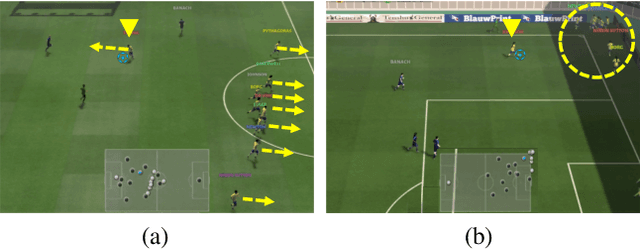
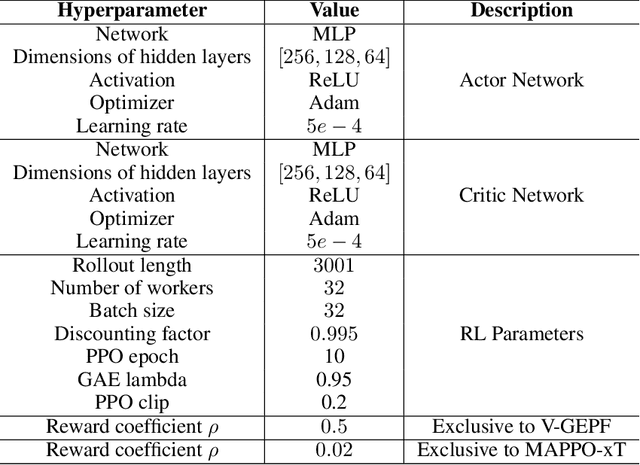
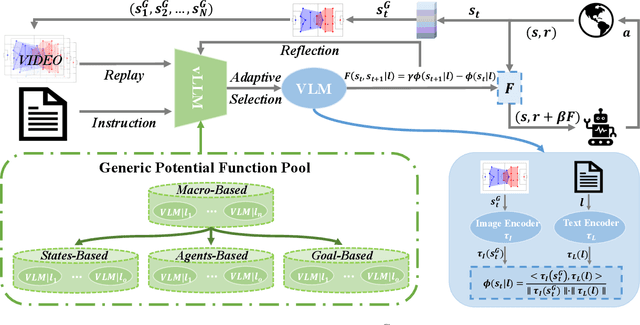
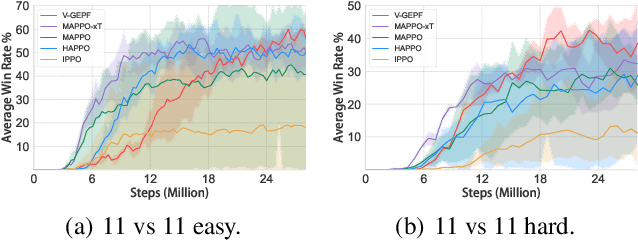
Abstract:Guiding the policy of multi-agent reinforcement learning to align with human common sense is a difficult problem, largely due to the complexity of modeling common sense as a reward, especially in complex and long-horizon multi-agent tasks. Recent works have shown the effectiveness of reward shaping, such as potential-based rewards, to enhance policy alignment. The existing works, however, primarily rely on experts to design rule-based rewards, which are often labor-intensive and lack a high-level semantic understanding of common sense. To solve this problem, we propose a hierarchical vision-based reward shaping method. At the bottom layer, a visual-language model (VLM) serves as a generic potential function, guiding the policy to align with human common sense through its intrinsic semantic understanding. To help the policy adapts to uncertainty and changes in long-horizon tasks, the top layer features an adaptive skill selection module based on a visual large language model (vLLM). The module uses instructions, video replays, and training records to dynamically select suitable potential function from a pre-designed pool. Besides, our method is theoretically proven to preserve the optimal policy. Extensive experiments conducted in the Google Research Football environment demonstrate that our method not only achieves a higher win rate but also effectively aligns the policy with human common sense.
Think Smarter not Harder: Adaptive Reasoning with Inference Aware Optimization
Jan 31, 2025Abstract:Solving mathematics problems has been an intriguing capability of large language models, and many efforts have been made to improve reasoning by extending reasoning length, such as through self-correction and extensive long chain-of-thoughts. While promising in problem-solving, advanced long reasoning chain models exhibit an undesired single-modal behavior, where trivial questions require unnecessarily tedious long chains of thought. In this work, we propose a way to allow models to be aware of inference budgets by formulating it as utility maximization with respect to an inference budget constraint, hence naming our algorithm Inference Budget-Constrained Policy Optimization (IBPO). In a nutshell, models fine-tuned through IBPO learn to ``understand'' the difficulty of queries and allocate inference budgets to harder ones. With different inference budgets, our best models are able to have a $4.14$\% and $5.74$\% absolute improvement ($8.08$\% and $11.2$\% relative improvement) on MATH500 using $2.16$x and $4.32$x inference budgets respectively, relative to LLaMA3.1 8B Instruct. These improvements are approximately $2$x those of self-consistency under the same budgets.
Enhancing Intelligibility for Generative Target Speech Extraction via Joint Optimization with Target Speaker ASR
Jan 24, 2025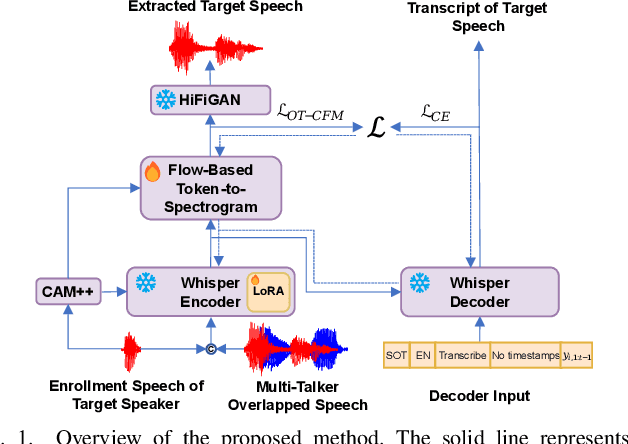
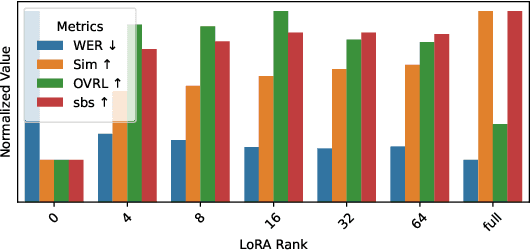
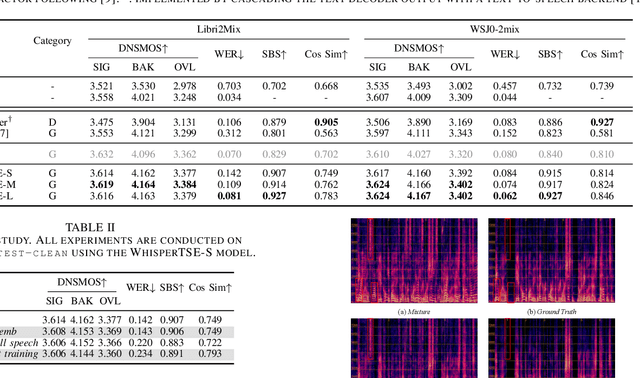
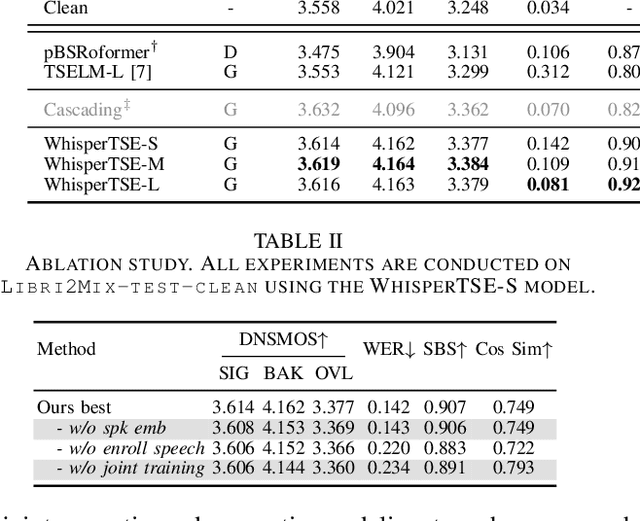
Abstract:Target speech extraction (TSE) isolates the speech of a specific speaker from a multi-talker overlapped speech mixture. Most existing TSE models rely on discriminative methods, typically predicting a time-frequency spectrogram mask for the target speech. However, imperfections in these masks often result in over-/under-suppression of target/non-target speech, degrading perceptual quality. Generative methods, by contrast, re-synthesize target speech based on the mixture and target speaker cues, achieving superior perceptual quality. Nevertheless, these methods often overlook speech intelligibility, leading to alterations or loss of semantic content in the re-synthesized speech. Inspired by the Whisper model's success in target speaker ASR, we propose a generative TSE framework based on the pre-trained Whisper model to address the above issues. This framework integrates semantic modeling with flow-based acoustic modeling to achieve both high intelligibility and perceptual quality. Results from multiple benchmarks demonstrate that the proposed method outperforms existing generative and discriminative baselines. We present speech samples on our demo page.
 Add to Chrome
Add to Chrome Add to Firefox
Add to Firefox Add to Edge
Add to Edge